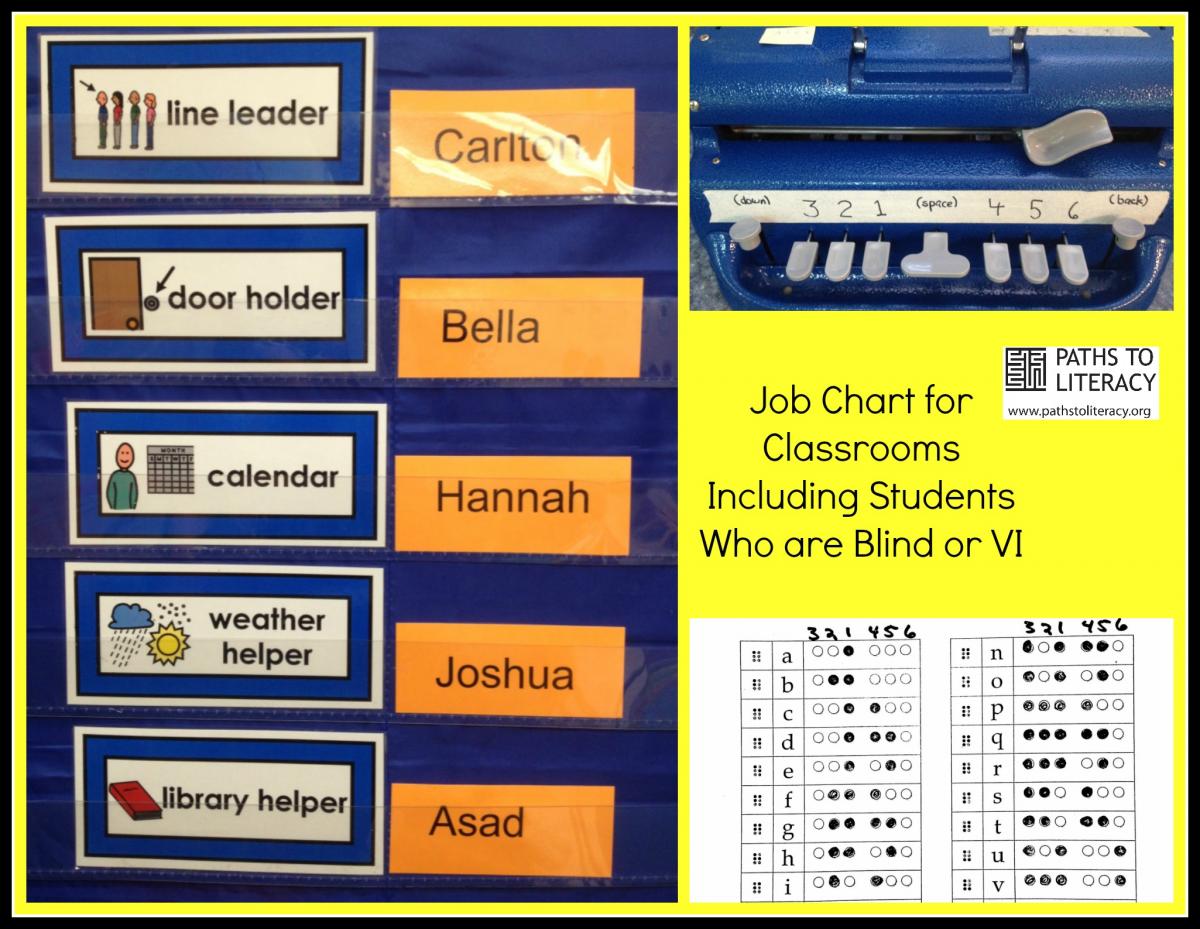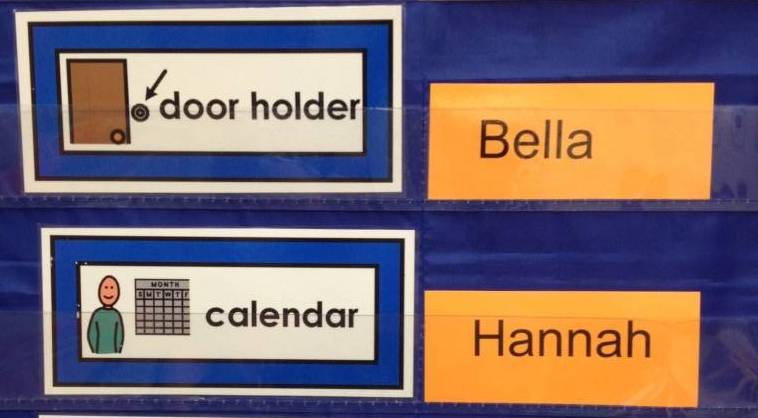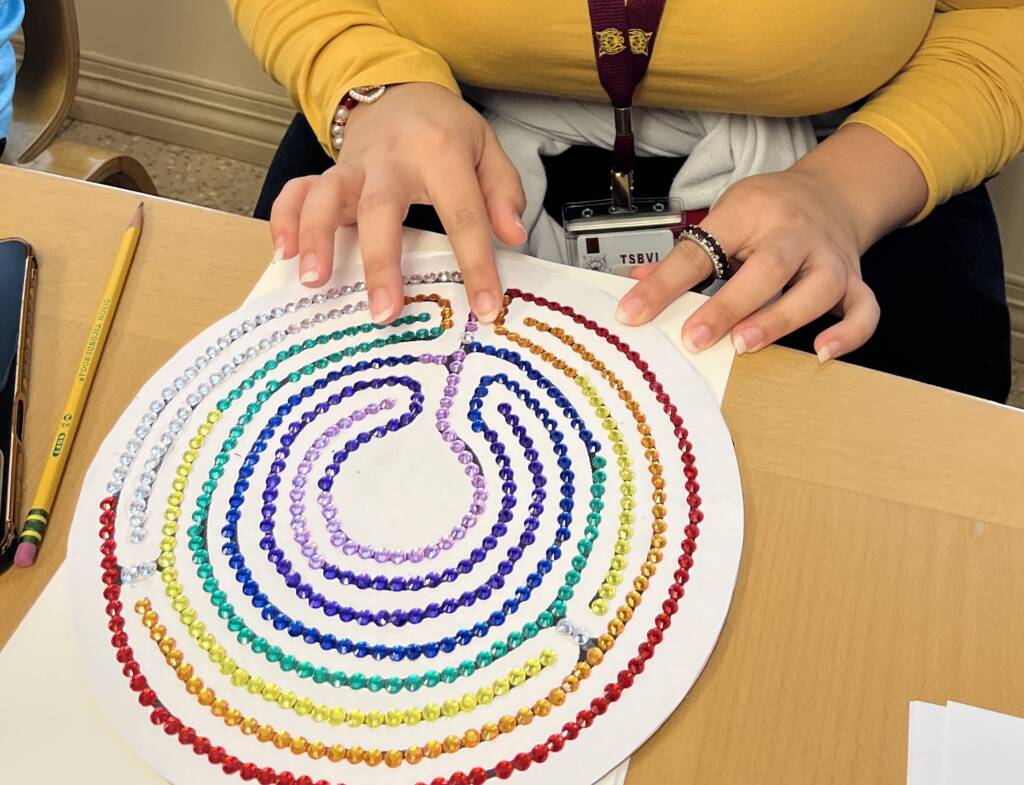Introduction:
Early elementary school classrooms typically post Job Charts. These are lists of classroom responsibilities that students rotate through weekly. Common jobs include “Plant Waterer,” “Line Leader,” “Door Holder,” and “Meteorologist/Weather Reporter.” When one of the students in inclusion classrooms has a visual impairment/blindness, I have found that it works well for teachers to post three additional roles on their Job Charts: “Guide,” “Transcriber,” and “Describer.”
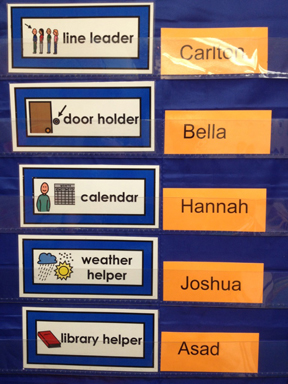
Guide:
The responsibility of the Guide is to walk with the student with a visual impairment/blindness, either side-by-side or with a sighted guide technique, as determined by his/her Orientation & Mobility Specialist. Specific tasks for this job are for a guide to say his/her name (“Hi, Alex, it’s ___,”) to offer (rather than require) assistance, to walk in guide position which is appropriate for the student, to safely negotiate doors (including describing them as “push/pull” and “to the left/right,”) to negotiate narrow passages, to negotiate stairs, and to finish guiding by leaving the student in contact with something and saying “good bye.”
Orientation & Mobility Specialists typically teach sighted students how to be Guides. They may begin by demonstrating guiding skills during a full class lesson early in the school year, and then work with classroom teachers/paraprofessionals to acquaint students with guide techniques through individual or small group instruction. On the basis of this instruction, the adults in the classroom may decide which students are ready to serve as guides, which may need closer observation, and which may benefit from further instruction. I developed a checklist and supplemental materials for this Guide training and observation process in Classroom Collaboration, published by Perkins.
Many students enjoy being Guides and are eager to help. However, the job can become burdensome for them over time, especially at recess/playground time when they may want to “get their wiggles out” by running and climbing without guiding at the same time. Other students are frankly nervous about being near a student who is blind or has a visual impairment, especially if they are alone with them, such as in carrying out short errands in the hallways. With this in mind, teachers may decide to assign the job of Guide to a group of two or three students, who either take turns or walk together in guiding the student who has a visual impairment.
Transcriber:
The role of the Transcriber is to write in braille. Students with this job may be asked to braille single words, sentences, and short lists. Teachers of Students with Visual Impairments are the team members who train sighted students to write braille. In one of the schools where I teach, I first presented a full class lesson on braille, then I established a center where students could practice on a braille writer and/or a slate and stylus. I always include the “Getting Ready” page I had created in Classroom Collaboration, where I drew the two by three reading braille matrix as a one by six writing matrix, in alphabetical order, to represent braillewriter keys.
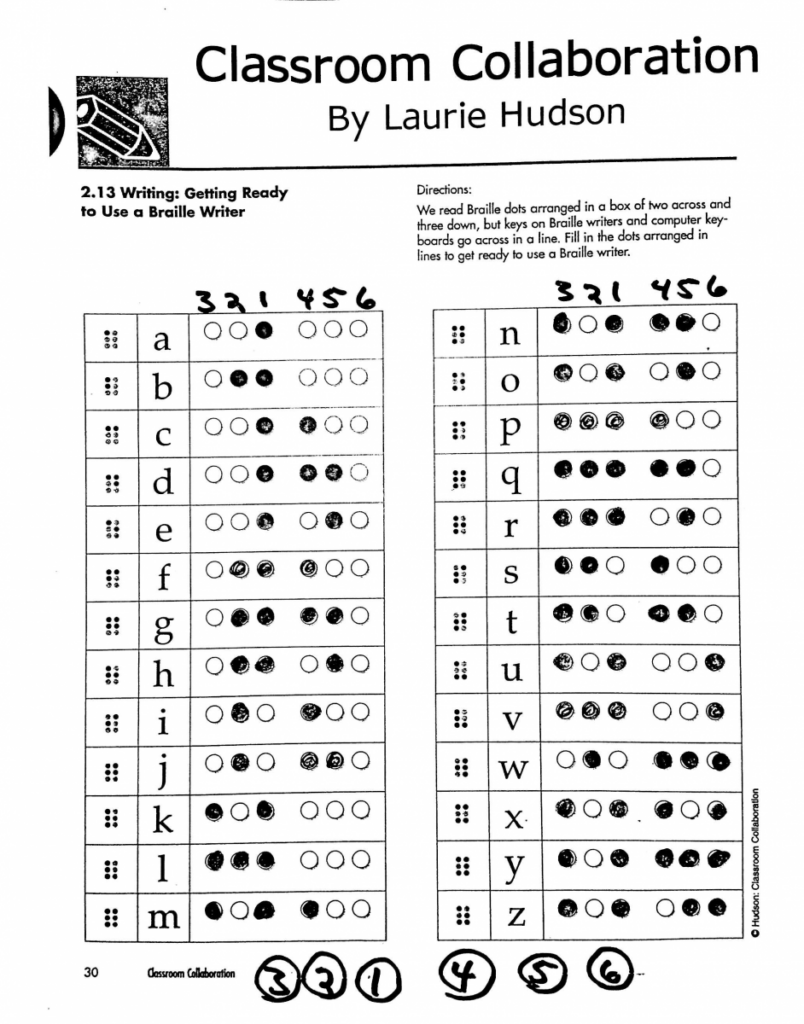
I also added key/dot numbers to the braille writer. In order to achieve the status of “Certified Brailler,” sighted students needed to demonstrate that they could (1) load and unload paper in a braillewriter or slate and stylus, (2) write the alphabet in less than one minute with the aid of a “Getting Ready” sheet, and (3) write their first name in braille without the Getting Ready sheet. As an extra perk, if there was an extra braille writer in the classroom and I had parental and teacher permission, I gave “certified braille writers” the privilege of trying to take their own spelling tests in braille, rather than in print. If they made an error, they had the option of re-writing their spelling words in print.
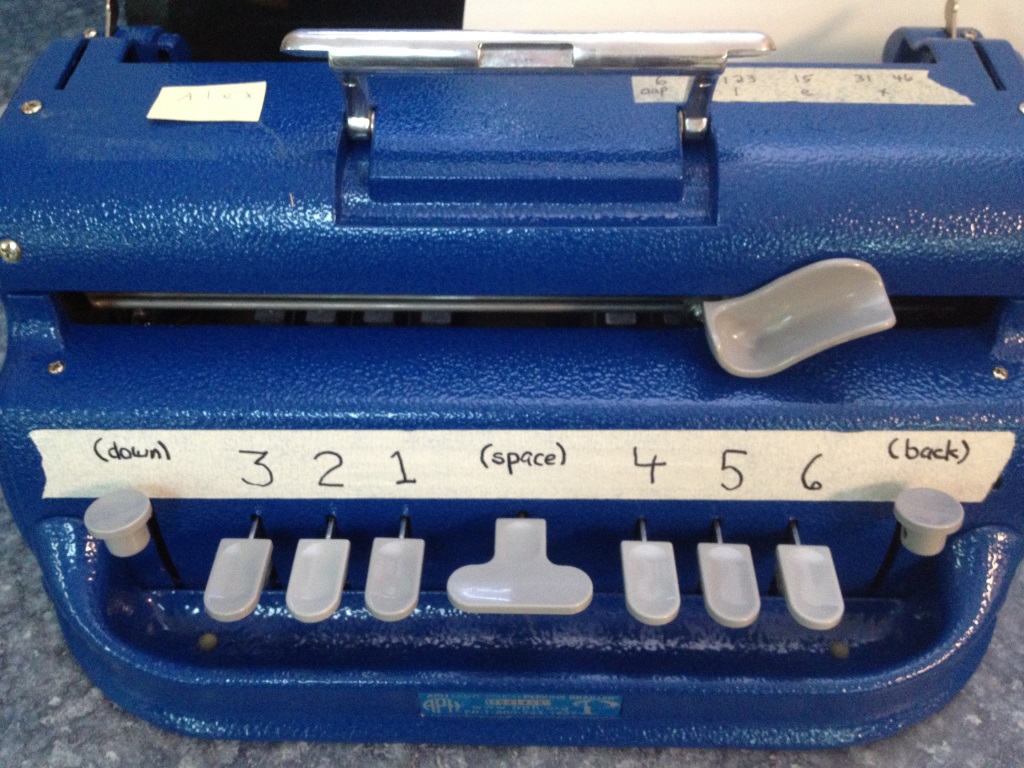
Describer:
The role of the Describer is for sighted students to say what they see. Students with this job put what they are seeing into words for their classmate who has a visual impairment or blindness. This may include describing pictures in books, objects for Show & Tell, positions/motions in physical education, the layout of a room or table, and/or social information such as who is in a group and what body language/facial expressions they are using. Obviously this can be a nearly full-time job; teachers assign just a few describing tasks in order for the sighted students to make a contribution and to begin to develop their skills in this area.
Training for the Describer job comes from both a Teacher of Students with Visual Impairments/TVI and an Orientation & Mobility Specialist. They may choose to introduce describing skills in a full class session, then coach students in individual or small groupings. They emphasize such attributes as size, shape, color, texture, material, function and moving parts. Nanci Bell’s “Visualizing and Verbalizing” curriculum was created to increase reading comprehension for young readers in general education settings, but it coincidentally serves as a rich resource in teaching describing skills to students with visual impairments. In addition, described video’s are exceptional examples of putting images into words, and The Described and Caption Media Program’s Description Key provides guidelines for describing educational media.
In Closing:
Whether or not classroom teams decide to include “Guide,” “Transcriber” and “Describer” on their Job Charts, I hope that they find a way to articulate for sighted students that they have three responsibilities as regards their classmate(s) with a visual impairment/blindness. (1) Give directions and guide, (2) say what they see, and (3) give friendship a chance (“Roles and Responsibilities of Sighted Students,” in Classroom Collaboration, pages 78-79) In practicing these roles, they may develop skills and empathy that will serve them well for their whole lives.
